Explore Our Guides & Webinars
Research and insights that grow your brand, commerce-first

Trending Now
general
New Year, New Me: How to Drive Brand Profitability in 2026
webinar
Beyond DTC vs. Retail: Winning with a Hybrid Commerce Strategy
webinar
Turn New Year Inspiration into Purchase-Ready Moments Online
webinar
Winning with Gen Alpha: Unlock the Purchase Drivers of Toys, Games, Gift Giving
Check Out Our Library
Filter by type
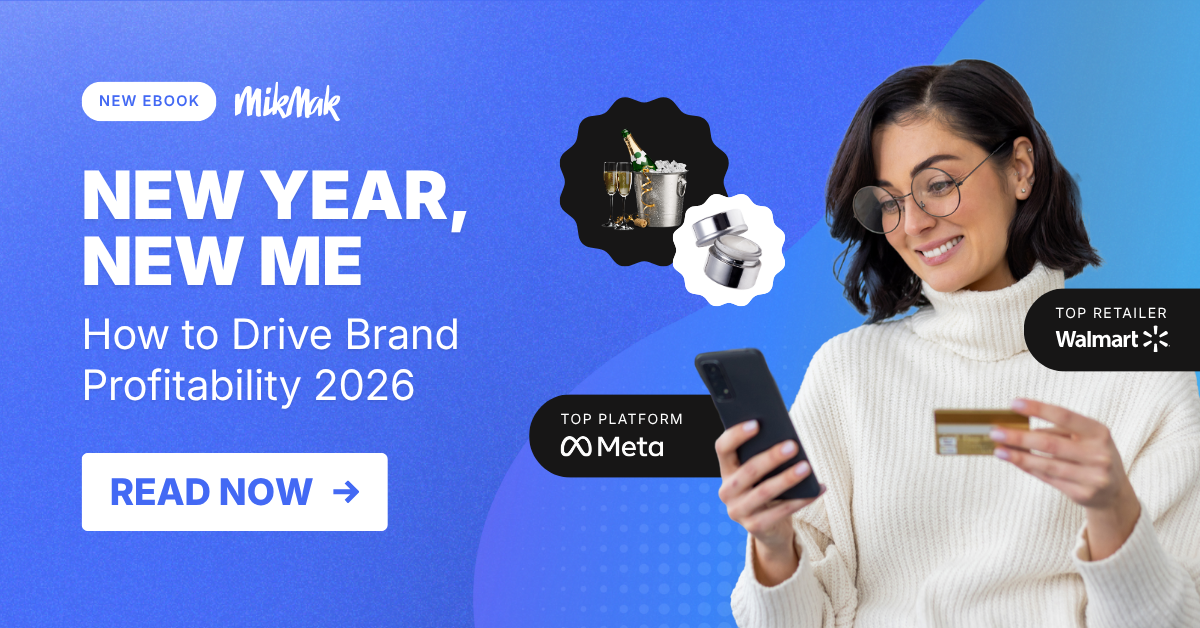
food & bev
| alcohol
| beauty
| personal care
| health & wellness
New Year, New Me: How to Drive Brand Profitability in 2026
How can your brand prepare for 2026? Learn how MikMak and Pinterest help brands drive growth through AI commerce, first-party data, and shoppable media.
Nov 2025
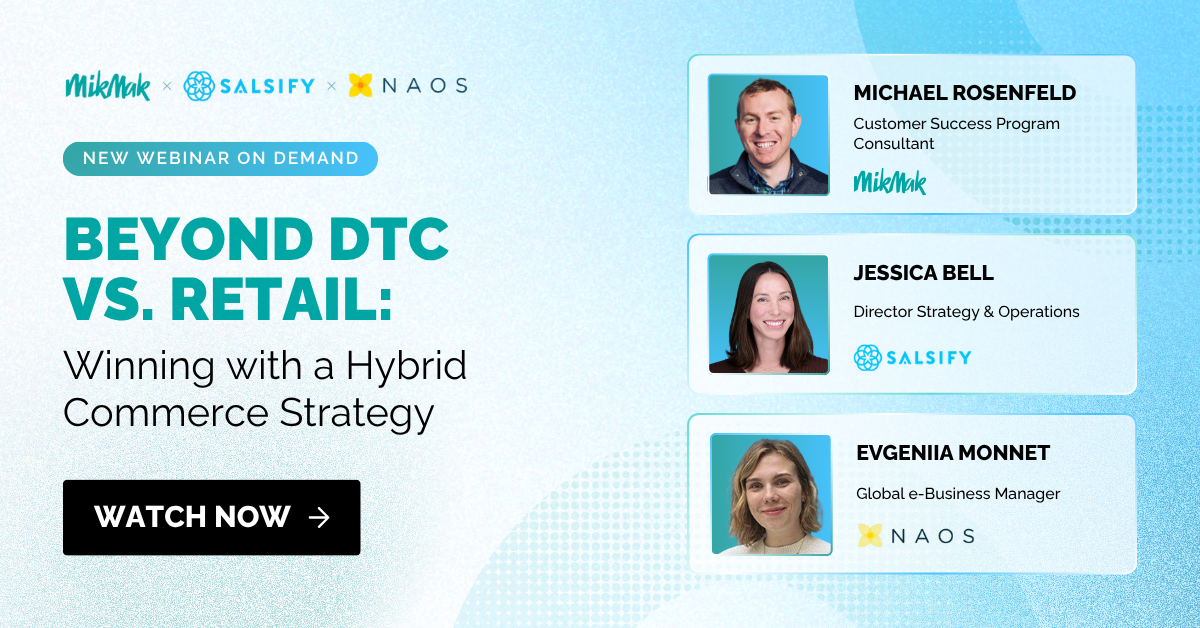
webinar
| global
| beauty
| personal care
Beyond DTC vs. Retail: Winning with a Hybrid Commerce Strategy
Discover how to win with DTC and retail. Watch MikMak, Salsify, & NAOS share insights, data, and strategies for a hybrid commerce approach.
Nov 2025

webinar
| global
Turn New Year Inspiration into Purchase-Ready Moments Online
Capture resolution-driven shoppers and maximize Q1 growth. Join experts from Pinterest, Unilever, MikMak and Carol Spieckerman Retail to learn how to turn visual inspiration into measurable eCommerce sales.
Oct 2025

webinar
| toys
Winning with Gen Alpha: Unlock the Purchase Drivers of Toys, Games, Gift Giving
Unlock Gen Alpha purchase drivers for toys, games, and gifts. Combine cultural insights and real-time eCommerce data to gain a competitive advantage this holiday season.
Oct 2025

health & wellness
Winning in OTC Health & Wellness eCommerce: Shopper Insights and Trends You Need to Know
Discover 2025 OTC Health & Wellness eCommerce trends and shopper insights from MikMak and Collage Group to grow multichannel brand sales.
Oct 2025

food & bev
| beauty
| alcohol
| pet care
| toys
| personal care
| health & wellness
| europe
Quarterly European eCommerce Benchmarks & Insights
Access quarterly European eCommerce benchmarks and channel performance insights tailored for consumer brands and their agency partners.
Oct 2025

toys
The 2025 Ultimate Guide to Toys & Games Commerce Marketing
Learn how your Toys & Games brand can optimize its commerce marketing strategy with real-time data, commerce enablement, and benchmarks to fuel your campaigns.
Oct 2025

general
Omnichannel Commerce Strategy Playbook for Modern Brands
Discover how brands can use omnichannel commerce strategies to drive sales, optimize media, and unify data with MikMak.
Oct 2025

food & bev
| beauty
| alcohol
| pet care
| toys
| personal care
| health & wellness
| north america
Quarterly United States eCommerce Benchmarks & Insights
Access quarterly US eCommerce benchmarks and channel performance insights tailored for consumer brands and their agency partners.
Aug 2025

food & bev
| alcohol
| toys
| electronics
| beauty
| personal care
How Can My Brand Prepare for the 2025 Holiday Season?
How can your brand prep for the 2025 holiday season? Unlock the latest marketing trends and best practices with MikMak’s real-time data.
Aug 2025

webinar
| global
State of the Union: 2025 Commerce Trends
Explore the top 2025 commerce trends and predictions from MikMak CEO Rachel Tipograph, featuring real-time insights, major headlines, and brand strategies.
Jul 2025

general
How Brands Win AI Shopping with GEO
How brands can boost AI commerce with Generative Engine Optimization, AI search, AI shopping, and generative AI in eCommerce.
Jun 2025
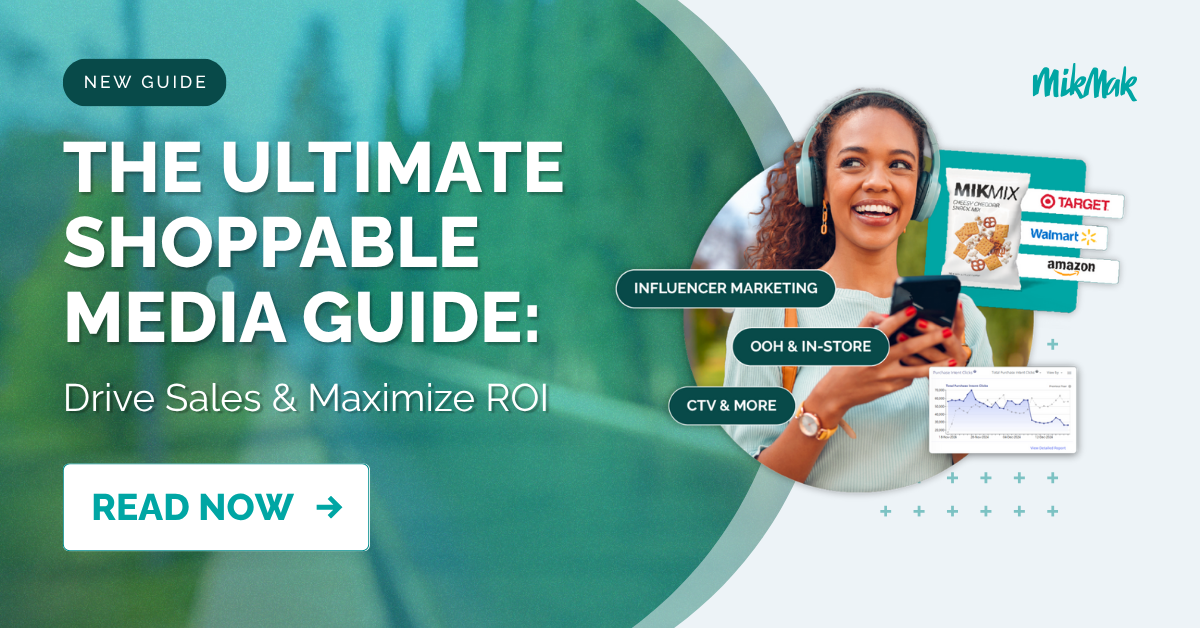
general
The Ultimate Shoppable Media Guide: Drive Sales & Maximize ROI
Discover what shoppable media is, how it works, and how multichannel brands use it to drive retail sales and maximize media ROI.
Jun 2025
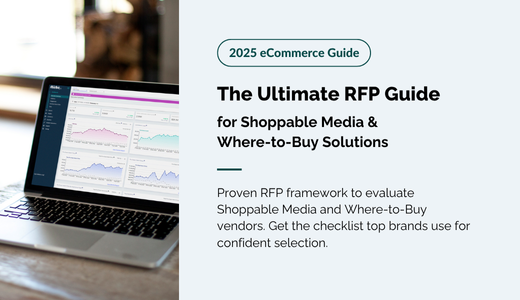
general
The Ultimate RFP Guide for Shoppable Media & Where-to-Buy Solutions
Proven RFP framework to evaluate Shoppable Media and Where-to-Buy vendors. Get the checklist top brands use for confident selection.
May 2025

webinar
| beauty
| personal care
MikMak Beauty Webinar: Strategies and Success Stories
Learn how Beauty brands use MikMak Insights and eCommerce data from digital marketing analytics platforms to drive growth and sales.
Apr 2025

beauty
| personal care
| europe
Beauty & Personal Care eCommerce Insights 2024 - Spain
The MikMak Shopping Index* reveals European shoppers’ purchase intent and engagement with multichannel Beauty and Personal Care brands in its latest industry guide. Here’s what the data shows for Spain.
Available in Spanish here.
Mar 2025
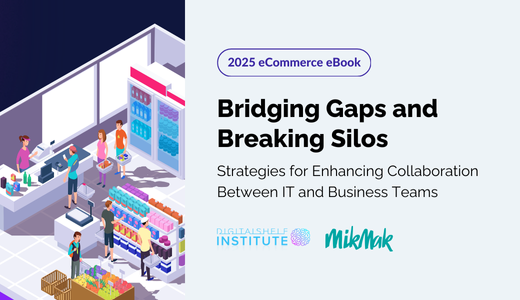
general
Bridging Gaps and Breaking Silos
The Digital Shelf Institute (DSI) partnered with MikMak on a new report to bridge the gap between those functions and share actionable steps for how both functions can work together to win.
Feb 2025

webinar
MikMak Q1 Customer Connect
Kick off 2025 with the insights you need to thrive! At MikMak’s first Customer Connect of the year, discover the latest market trends, innovative commerce solutions, and strategies for success. Hear firsthand from fellow MikMak customers as they share how they're driving incremental growth—even in a challenging economic climate.
Feb 2025
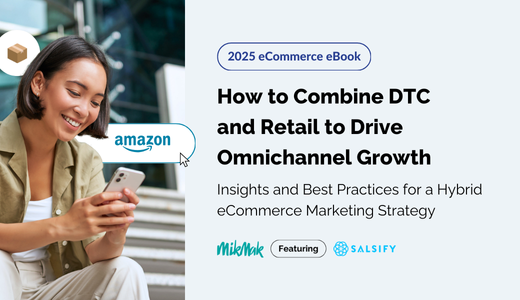
general
How to Combine DTC and Retail to Drive Omnichannel Growth
Discover how to combine DTC and retail strategies for a hybrid eCommerce marketing approach. Learn best practices to boost sales and meet shopper needs.
Jan 2025
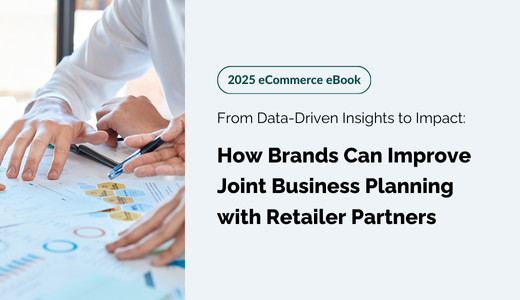
general
How Brands Can Improve Joint Business Planning with Retailer Partners
Transform Joint Business Planning with eCommerce analytics and data-driven insights to strengthen retailer partnerships and drive mutual growth.
Jan 2025
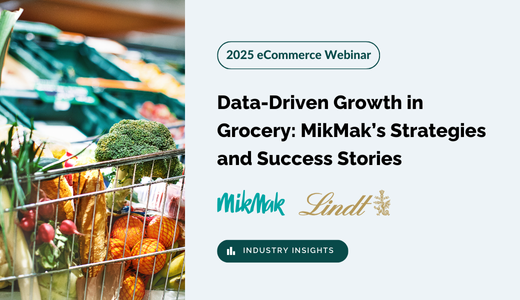
food & bev
| webinar
Data-Driven Growth in Grocery: MikMak’s Strategies and Success Stories
Learn how Grocery and Food & Beverage brands use MikMak Insights and eCommerce data from digital marketing analytics platforms to drive growth and sales.
Jan 2025
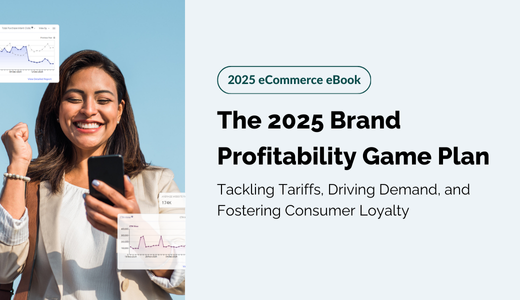
general
The 2025 Brand Profitability Game Plan
Discover strategies for tackling tariffs, driving demand, and fostering consumer loyalty to boost brand profitability in 2025.
Jan 2025
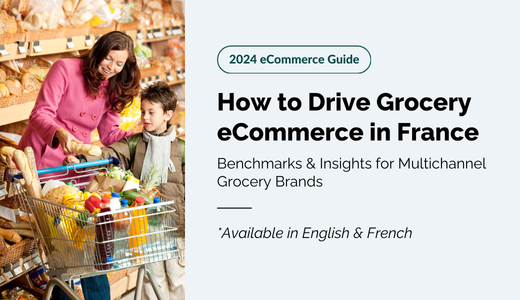
food & bev
| europe
How to Drive Grocery eCommerce in France
Explore Top Grocery eCommerce trends and strategies in France. Gain data-driven insights, actionable tips, and best practices to boost sales in 2025.
Dec 2024
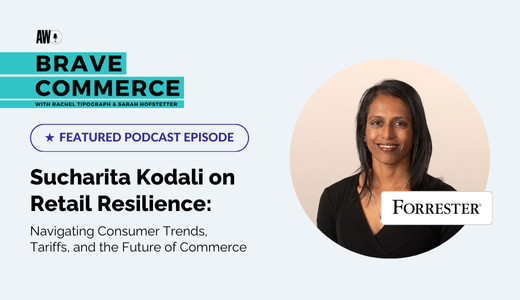
general
Sucharita Kodali on Retail Resilience | BRAVE COMMERCE Podcast
On this episode of BRAVE COMMERCE, Forrester's Sucharita Kodali joins hosts Rachel Tipograph and Sarah Hofstetter to explore the 'vibecession,' resilient consumer spending, and the impact of inflation and shifting preferences on retail in 2024.
Dec 2024

food & bev
| europe
How to Drive Grocery eCommerce in the UK
Discover top UK grocery eCommerce trends and strategies for 2025. Access insights, data, and best practices to grow sales and drive success.
Dec 2024
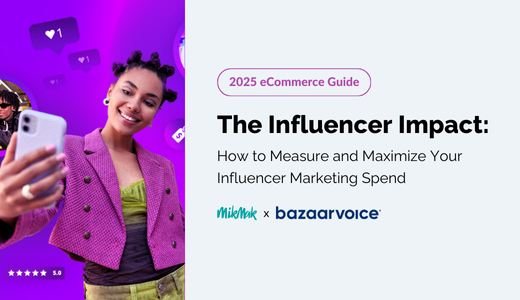
general
The Influencer Impact: How to Measure and Maximize Your Influencer Marketing Spend
Discover how to optimize your influencer marketing ROI with shoppable media, actionable insights, and strategies to boost sales.
Dec 2024

food & bev
| alcohol
| health & wellness
| personal care
New Year, New Me
Discover 2025 eCommerce trends, consumer benchmarks, and strategies across Grocery, Alcohol, Health & Wellness, and Personal Care to grow your brand.
Nov 2024
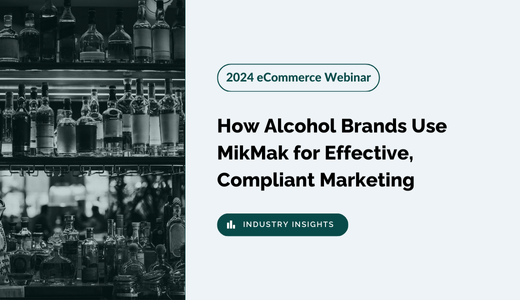
alcohol
| webinar
How Alcohol Brands Use MikMak for Effective, Compliant Marketing
Learn how top Alcohol brands leverage MikMak’s omnichannel marketing tools and compliance controls to drive growth.
Oct 2024

personal care
| beauty
| europe
How to Drive Beauty & Personal Care eCommerce in Europe
Explore top eCommerce marketing strategies for Beauty & Personal Care brands in Europe. Get insights from key markets to drive shopper traffic and sales.
Oct 2024
.png)
general
The 2024 Costco eCommerce Playbook
Learn how to leverage Costco’s eCommerce growth with insights on omnichannel marketing, shoppable media, and first-party data strategies for 2024.
Sep 2024

general
Secrets to Growing Your Brand’s Top-Line in Tough Economic Times
Learn how to grow your brand’s top-line in tough times with shoppable media, store locator technology, and a balanced marketing strategy that drives new demand.
Sep 2024

general
'Tis the Season for Driving Profitability
The 2024 holiday season presents a unique challenge for multichannel brands amid economic uncertainty and evolving consumer behaviors. To thrive, brands must strategically balance their media investments, leverage first-party data, and stay ahead of the latest trends in eCommerce.
Aug 2024
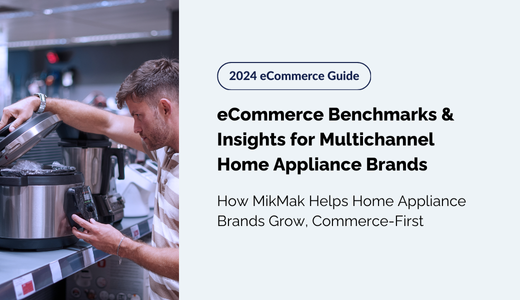
home appliance
| europe
| north america
eCommerce Benchmarks & Insights for Multichannel Home Appliance Brands
According to 360iResearch, the eCommerce Home Appliances Market size was estimated at USD 70.88 billion in 2023 and is expected to reach USD 79.10 billion in 2024, and is expected to grow to USD 157.51 billion by 2030. What is your brand doing to stay ahead of the trends and keep its products in shopping carts?
Jul 2024

webinar
The AI Playbook for Digital Commerce
Watch this on-demand session centered around best practices for selecting, testing, operationalizing and measuring AI capabilities in ecommerce, and hear from top AI providers and thought leaders on bringing first class experiences to consumers at scale through new AI technologies.
Jul 2024
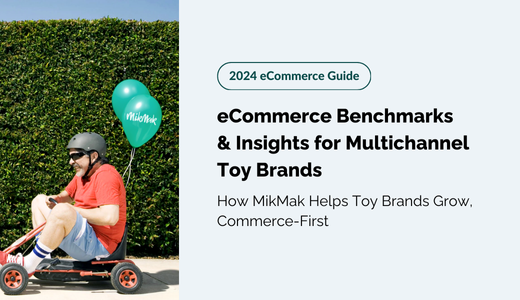
toys
eCommerce Benchmarks & Insights for Multichannel Toy Brands
According to Statista, the Toys & Games market worldwide is projected to generate a revenue of US$130bn in 2024. What is your brand doing to stay ahead of the trends and keep its products in shopping carts?
Jul 2024

alcohol
| europe
European eCommerce Benchmarks & Insights for Multichannel Alcohol Brands
According to Statista, the Alcohol eCommerce market in Europe is forecasted to exceed 12 billion euros by 2028, with the UK representing the largest share. Is your brand’s marketing approach adapted to shifting trends that are currently moving the needle for Alcohol eCommerce?
Jul 2024
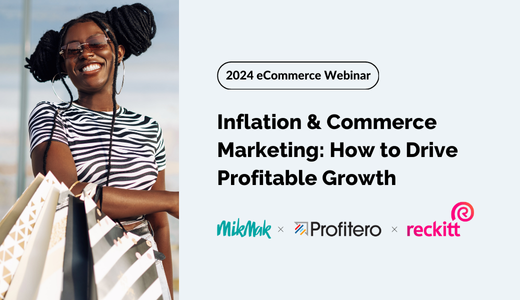
webinar
Inflation & Commerce Marketing: How to Drive Profitable Growth
In the face of ongoing economic challenges and margin compressions, sustaining and expanding market share requires strategic advertising investments from multichannel brands. How can you best adapt your global commerce marketing and media strategies during the tougher times?
Jul 2024

alcohol
| webinar
How Alcohol Brands Grow, Commerce-First
Over the years, Alcohol has played a critical role in the ways people celebrate. Now, as Gen Z becomes of legal drinking age, and the commerce landscape has shifted, consumers’ shopping habits surrounding Alcohol have evolved.
Jun 2024

electronics
| europe
eCommerce Benchmarks & Insights for Multichannel Consumer Electronics Brands
According to Statista, the Consumer Electronics eCommerce market is projected to reach a staggering $1,046 billion worldwide by 2024. What is your brand doing to stay ahead of the trends and keep its products in shopping carts?
Jun 2024
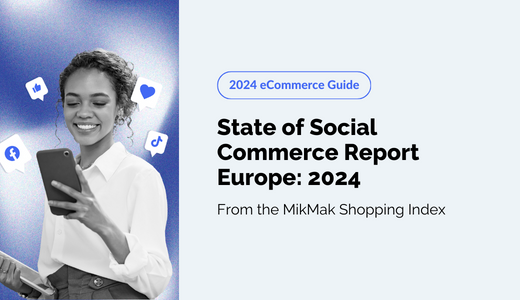
europe
State of Social Commerce Report Europe: 2024
European social commerce revenues amounted to $26.7 billion in 2023, and are projected to grow to 48.3 billion by 2028*. How is your brand staying up-to-date with the trends and capturing the attention of shoppers on social media in Europe?
May 2024

alcohol
eCommerce Benchmarks & Insights for Multichannel Alcohol Brands
According to Statista, the Alcohol eCommerce market is projected to reach over $51 billion by 2029. What is your brand doing to stay ahead of the trends and keep its products in shopping carts?
May 2024
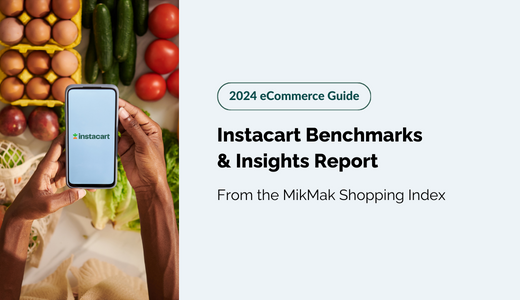
general
Instacart Benchmarks & Insights Report
According to Statista, US eCommerce Grocery Sales on Instacart are projected to reach $40.54 billion this year. Given this continued growth, it is more important than ever for brands to understand how Instacart’s consumers shop.
May 2024

general
How to Accelerate Sales with Where-to-Buy Solutions on Brand Websites
Brand websites play a crucial role in pre-purchase research, with 56% of shoppers relying on them for product information. How effectively does your brand leverage this trend to convert potential buyers and analyze their behavior?
Mar 2024

personal care
eCommerce Benchmarks & Insights for Multichannel Personal Care Brands
According to eMarketer, eCommerce for Personal Care is projected to be the fastest-growing sector by next year, growing 17.5 percent. How is your brand optimizing its online strategy to appeal to consumers?
Mar 2024

webinar
Consumer-Centric Commerce: How to Drive eCommerce Growth with the Ultimate Omnichannel Brand Experience
The buyer’s journey is nonlinear. Adequately promoting your product at every stage of its development can maximize sales, and beat the competition. Join MikMak’s Sasha Reyes-Guerra, Bazaarvoice’s Adam Russack, and Diageo’s Allison Webb as they explore the entire shopping experience, and the variety of visual content and data that goes along with it.
Feb 2024
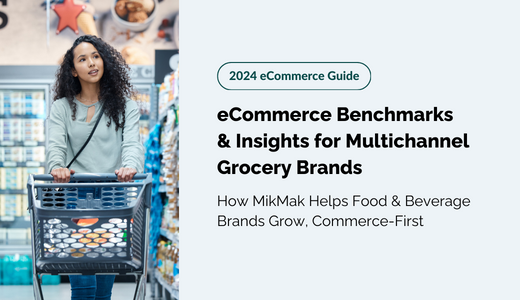
food & bev
eCommerce Benchmarks & Insights for Multichannel Grocery Brands
According to eMarketer, Digital grocery sales will account for 19 percent of US eCommerce sales in 2026, becoming the largest eCommerce category. How is your brand optimizing its online strategy to appeal to consumers?
Feb 2024

food & bev
| toys
| personal care
Walmart Benchmarks & Insights Report
Across the MikMak Shopping Index, brands in many different categories see Walmart as a top retailer preference from shoppers. Leveraging this popular retailer as a premier option for your products, and staying close to the data, could help you win with consumers in 2024 and beyond.
Jan 2024
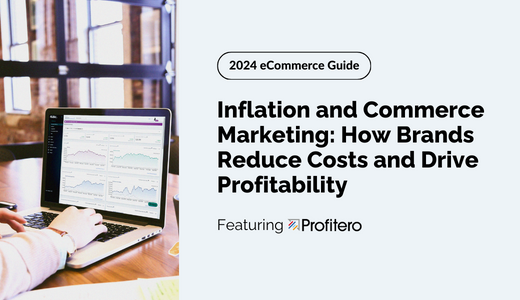
food & bev
| personal care
| beauty
| alcohol
| electronics
| toys
| home care
| pet care
Inflation and Commerce Marketing Report 2024: How to Reduce Costs and Drive Profitability
In the face of ongoing economic challenges and margin compressions, sustaining and expanding market share requires strategic advertising investments from multichannel brands. How well is your brand adapting its digital marketing strategies to meet the evolving consumer and market trends in 2024, to drive profitable commerce growth?
Jan 2024
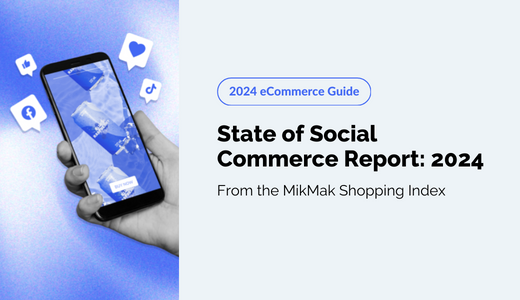
general
State of Social Commerce Report: 2024
Social commerce sales accounted for nearly 1.3 trillion dollars worldwide in 2023, and are projected to grow to 8.5 trillion by 2030*. How is your brand staying up-to-date with the trends and capturing the attention of shoppers on social media?
Jan 2024
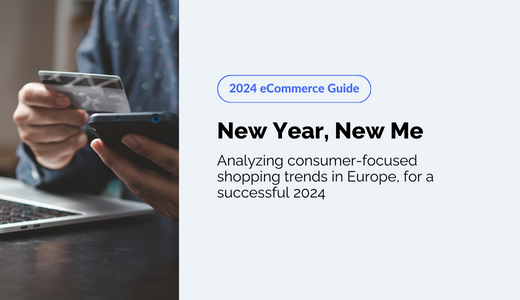
food & bev
| personal care
| alcohol
| beauty
2024 New Year, New Me: Europe
According to the MikMak Shopping Index, European shoppers are predicted to be budget-conscious in 2024. How can your brand stay at the top of their shopping list?
To accelerate sales and gain market share, first-party data will become ever more crucial for multichannel brands. Additionally, Retail Media is on everyone’s lips, but there are many challenges to consider.
Dec 2023
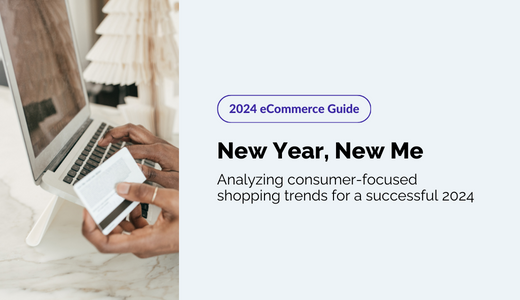
food & bev
| personal care
| alcohol
| beauty
2024 New Year, New Me: US
Based on data from the MikMak Shopping Index, shoppers are predicted to be budget-conscious in 2024. Additionally, there will be an emphasis on first-party data, due to data privacy changes, and the rise of retail media may present challenges to brands.
Dec 2023
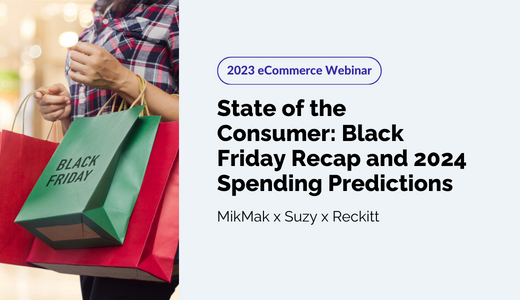
webinar
State of the Consumer: Black Friday and 2024 Spending Predictions
The retail landscape has changed. Now, deals are spread throughout the year, and inflation-conscious shoppers are saving more than they’re spending. Will brands see the boost they need this holiday spending season? Or will Black Friday/Cyber Week turn out to be more of a whisper than a bang?
Nov 2023

general
YouTube Benchmarks and Insights for Multichannel eCommerce Brands
Did you know, 68 percent of YouTube users say they use the platform to make purchasing decisions.? How is your brand optimizing its social commerce strategy to appeal to consumers on YouTube?
Nov 2023

food & bev
| europe
European eCommerce Benchmarks & Insights for Multichannel Food & Beverage Brands
In 2023, over 50 percent of the UK population and 25 percent of the French households purchase food and non-alcoholic drinks online. eCommerce keeps evolving in the Food & Beverage sector in Europe, influenced by shifting omnichannel consumer behavior. How is your brand making products discoverable to accelerate sales?
Nov 2023
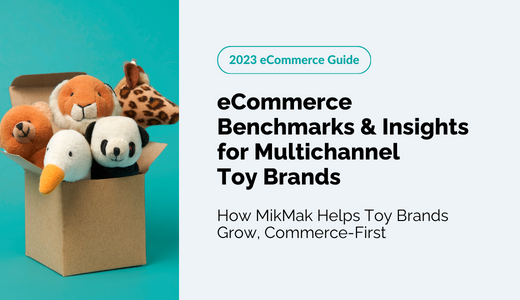
toys
eCommerce Benchmarks & Insights for Multichannel Toy Brands
According to Statista, eCommerce revenue for the Toys and Hobby industry is projected to reach $256.33 million in 2023, and grow to $385.17 million by 2027. How is your brand making products discoverable to consumers in this growing market?
Oct 2023

food & bev
personal care
beauty
europe
Carrefour France Benchmarks & Insights Report
Carrefour is French consumers’ second most preferred Grocery retailer in 2023. This year, Carrefour also ranks among the Top 5 retailers for Beauty and Personal Care eCommerce in France, according to MikMak Shopping Index. Would you like to know how to optimize your marketing to win more Carrefour shoppers for your brand, by using the right channels at the right time and in the best way?
Oct 2023

health & wellness
What Over-the-Counter Medicine Brands Need to Know This Cold & Flu Season
As households across the nation prep their medicine cabinets for the impending wave of colds and flu, Over-the-Counter Medicine brands should be taking a close look at how and where shoppers are shopping.
Sep 2023
.png)
home care
eCommerce Benchmarks & Insights for Multichannel Home Care Brands
According to Statista, revenue in the Home Care market is projected to reach $68.03bn in 2023 worldwide. How is your brand making products discoverable to consumers in this growing market?
Sep 2023
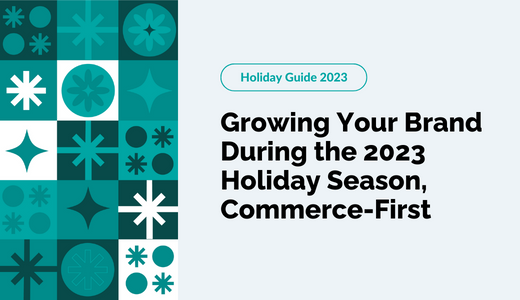
general
Growing Your Brand During the 2023 Holiday Season, Commerce-First
With a backdrop of inflation, brands that continue to invest in their eCommerce strategies will withstand the test of time. The key is to have the right insights and best practices on-hand to know exactly where, how and when to spend your next dollar.
Aug 2023

beauty
| personal care
Boots UK Benchmarks & Insights Report
According to the MikMak Shopping Index, Boots is the preferred retailer for Beauty and Personal Care eCommerce in the UK in 2023. Did you also know that Snapchat has emerged as the second-most popular social commerce platform for Boots shoppers?
Aug 2023

pet care
2023 Pet Care Benchmarks and Insights
According to Insider Intelligence, nearly half of all US Pet Care product sales will be made online by 2025. How is your Pet Care brand optimizing its eCommerce strategy to appeal to consumers over competitor brands?
Jul 2023

beauty
| personal care
| europe
2023 Beauty & Personal Care Benchmarks and Insights: Europe
While the proportion of online shoppers in EU countries continues to grow, Beauty has risen to be the third most popular eCommerce category in the region. How is your brand optimizing its online strategy to appeal to Beauty & Personal Care consumers?
Jul 2023

webinar
| beauty
Cracking the Code to Holiday eCommerce Success: Insights from the Beauty Sector
While December might feel far away, now is the perfect time to start preparing your holiday campaigns in order to maximize your holiday retail sales and stand out from the competition. In this webinar, we’ll be taking a closer look at what your brand can do to prepare for the holidays and other seasonal events, with a focus on the beauty sector.
Jun 2023
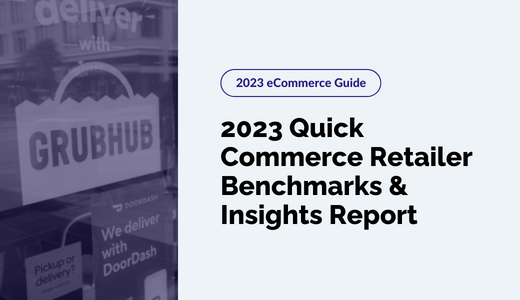
food & bev
alcohol
2023 Quick Commerce Retailer Benchmarks & Insights Report
Quick Commerce, or Q-Commerce, retailers like Instacart, DoorDash and GoPuff are quickly gaining momentum with online shoppers. How is your brand positioning its availability with these fast and convenient retailers?
Jun 2023

beauty
2023 Beauty eCommerce Benchmarks and Insights
According to eMarketer, Beauty eCommerce is predicted to reach $30.73 billion by 2026. How is your brand optimizing its online strategy to appeal to beauty consumers?
May 2023

general
Pinterest Benchmarks & Insights Report
Did you know, Pinterest’s audience grew 7.5 percent year-over-year? That makes it the third-fastest growing social media platform worldwide, outpacing the likes of Facebook, YouTube, and Instagram. How is your brand optimizing its social commerce strategy to appeal to consumers on Pinterest?
Apr 2023

alcohol
Global Social Commerce Trends, Tips, & Predictions for Alcohol Brands
In this eBook, we'll explore the nuances of social commerce in different regions and industries, as well as examine what the future holds specifically for alcohol brands.
Apr 2023

cpg
Global Social Commerce Trends, Tips, & Predictions for Multichannel Brands
In this eBook, we'll explore the nuances of social commerce in different regions and industries, as well as examine what the future holds.
Apr 2023

alcohol
2023 Alcohol eCommerce Benchmarks and Insights
According to IWSR Drinks Market Analysis, eCommerce Alcohol sales are predicted to grow by more than a third to reach $40 billion by 2026. How is your brand optimizing its online strategy to appeal to consumers?
Mar 2023

food & bev
2023 Grocery eCommerce Benchmarks and Insights
According to eMarketer, Grocery eCommerce will be a $243 billion market in the US by 2025. How is your brand optimizing its online strategy to appeal to consumers?
Mar 2023
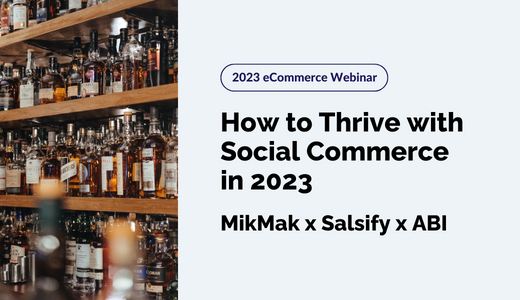
webinar
| alcohol
How to Thrive with Social Commerce in 2023
Global sales through social media platforms reached an estimated $992 billion in 2022, and that growth isn’t expected to slow down soon! Join MikMak, alongside Salsify, and Anheuser-Busch InBev, as they discuss the growing importance of social commerce and the role it plays in an omnichannel commerce strategy.
Feb 2023

general
Target Benchmarks & Insights Report
Did you know that TikTok has emerged as a top social commerce platform for Target shoppers in the last year? Or that Sunday evening is the best time to reach Target shoppers? Knowing the trends and insights specific to Target could help you win with consumers into 2023 and beyond.
Jan 2023

general
State of Social Commerce Report: 2023
U.S. retail social commerce sales will surpass $53 billion in 2023, and they’re expected to grow at a double-digit clip in the next three years.* Stay in the know about social commerce so your brand can be on the right platforms at the right time to drive more sales and market share in 2023.
Jan 2023

food & bev
| europe
UK Food & Beverage Benchmarks and Insights
Did you know, According to eMarketer, Grocery eCommerce is estimated to represent 21.6 percent of total eCommerce sales by 2025. In the UK, Food & Beverage eCommerce is a growing market.
Jan 2023

personal care
| alcohol
| beauty
"New Year, New Me" Budget Conscious Shopping in 2023
In 2023, consumer spending will be smaller, more frequent, and more budget-aware. Staying close to the data can help you understand when consumers will be purchasing. Get to know the trends to win in the New Year.
Dec 2022

health & wellness
2022 Health & Wellness Benchmarks and Insights
Social channels are responsible for 71 percent of traffic (Purchase Intent Click)s from Health & Wellness shoppers on the MikMak Platform. Knowing how Health & Wellness consumers are shopping can help your brand improve its eCommerce strategy, as well as maintain and gain market share.
Dec 2022

general
2022 Walmart Benchmarks & Insights Report
According to the MikMak Shopping Index, Walmart is the preferred retailer among grocery, beauty, and personal care shoppers in 2022. Leveraging this popular retailer as a premier option for your products, and knowing the trends and insights specific to it, could help you win with consumers into 2023 and beyond.
Dec 2022
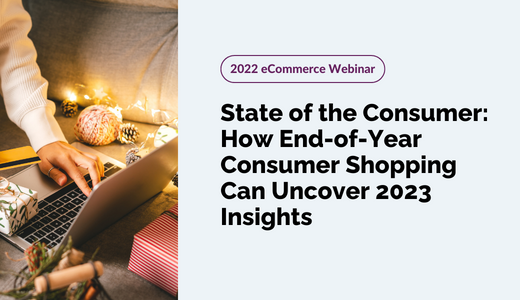
webinar
State of the Consumer: How End-of-Year Consumer Shopping Can Uncover 2023 Insights
Join Suzy’s Founder & CEO Matt Britton and MikMak’s Founder & CEO Rachel Tipograph for a conversation about shopping trends immediately after two of the biggest shopping days of the year: Black Friday and Cyber Monday. Tune in to learn how consumers shopped this holiday season, what they bought and where they saved, and how brands can incorporate these insights into their 2023 planning.
Nov 2022
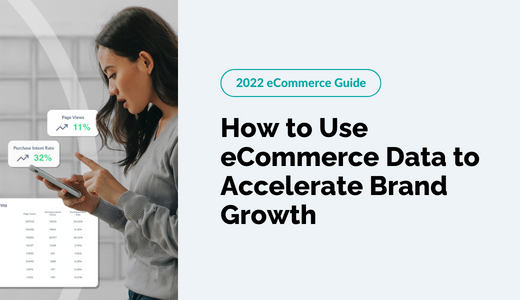
general
How to Use eCommerce Data to Accelerate Brand Growth
eCommerce data is a leading indicator of everything happening in a brand’s business. Its strategic power is immense, yet it is too often only used tactically.
Nov 2022

toys
2022 Toys and Games Benchmarks and Insights
Did you know that currently, over 89 percent
of all Toys & Games shoppers on the MikMak Platform began their shopping journey on Facebook and Instagram? Across all major social platforms, purchase intent rates for this category are high. What insights can your brand leverage to win consumers in this category?
Oct 2022
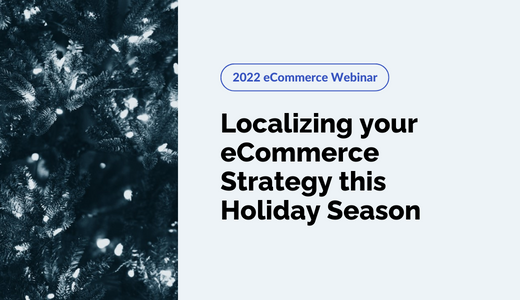
webinar
Localizing your eCommerce Strategy this Holiday Season
Holiday shopping starts November 1st. What is your brand doing to prepare as we approach the busiest time of year for commerce? MikMak partners with Nextdoor and Code3 to speak on the trends we have uncovered to make your brand’s holiday season an eCommerce success story.
Sep 2022

home care
Home Care Benchmarks & Insights
Did you know that currently, over 60 percent of all Home Care shoppers on the MikMak platform began their shopping journey on Facebook and Instagram? It is clear that social commerce will continue to be crucial throughout 2022.
Sep 2022
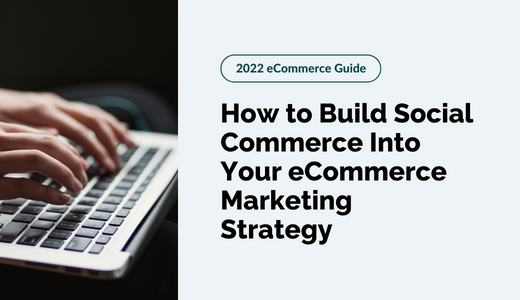
general
How to Build Social Commerce Into Your eCommerce Marketing Strategy
Every day, shoppers are exposed to hundreds of brands on social media, all available at their fingertips. This means more than ever, social commerce strategy has become vital to eCommerce marketing.
Aug 2022
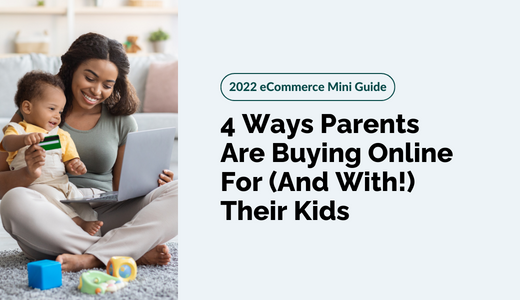
toys
| electronics
| cpg
4 Ways Parents Are Buying Online For (And With!) Their Kids
Growing up in the digital age, children today are no strangers to social commerce and eCommerce. They have opinions about not just what to buy, but also where to make these purchases.
Aug 2022
.jpg)
webinar
Unlocking Omnichannel Experiences ft. KraftHeinz's Ashley Becker | Adweek Commerce Week
BRAVE COMMERCE Podcast hosts Rachel Tipograph and Sarah Hofstetter join The KraftHeinz Company's VP of eCommerce and Omni Customer Growth, Ashley Becker at Adweek's 2022 Commerce Week.
Jul 2022

general
Giving Consumers All They Want for the Holidays
With macro shifts in the economy shaping the eCommerce landscape this year, understanding your consumer is more crucial than ever before. Stay ahead of the trends to prepare your brand to win this holiday season.
Jul 2022
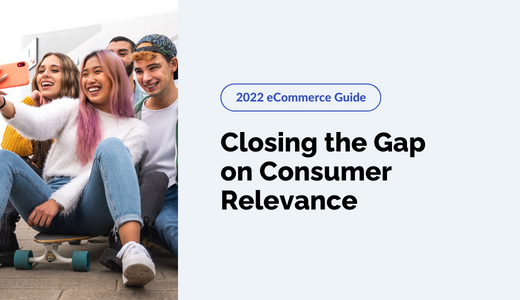
general
Closing the Gap on Consumer Relevance
How do Gen Z shopping habits differ from other generations? How does purchase intent change when households have children? In MikMak's new guide on "Closing the Gap on Consumer Relevance", we answer just that, and more!
Jul 2022

personal care
| beauty
| cpg
Livestream Commerce
In this guide, we take a closer look at how the marketing funnel has shifted for beauty brands. We provide tips on utilizing product adjacency to drive profitability and what social commerce best practices are important for beauty brands to leverage.
Jul 2022
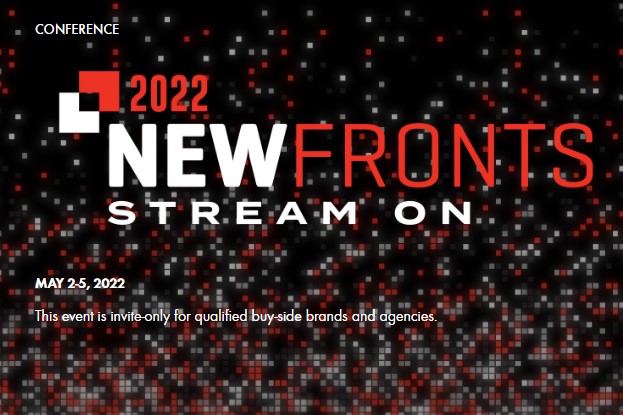
webinar
2022 IAB NewFronts
IAB NewFronts (May 2-5) is the world’s largest digital content marketplace that gives media buyers a first look at the latest digital content from the biggest names in media and entertainment. This must-attend showcase brings together thousands of brands, agencies, and media buyers for a week full of digital content presentations and celebrity talent, while kickstarting discussions about issues critical to the future of the media industry.
May 2022

personal care
Personal Care Benchmarks & Insights
May 2022

webinar
Marketing for the Now Episode 33 with Gary Vaynerchuk featuring Rachel Tipograph
Join us for the April edition of Marketing for the Now, where top experts like Sophie Bambuck (Everlane), Gretchen Rubin, Rachel Tipograph (MikMak), Rob Master (Unilever), Kevin Miller (The Fresh Market), and Manos Spanos (L-Nutra) share their hot takes for 2022.
Apr 2022

alcohol
| webinar
Alcohol eCommerce Best Practices
Since social distancing shifted gatherings into households and eCommerce moved more shoppers toward the digital shelf, alcohol purchasing behavior and consumer expectations have changed with it.
Mar 2022

beauty
Beauty Benchmarks & Insights
Where are shoppers buying their makeup? What other items are they buying along with their favorite mascaras and lip glosses? What social channels and retailers drive the most purchase intent for beauty brands? MikMak's guide, “Beauty eCommerce Benchmarks and Insights” answers all this and more.
Mar 2022

alcohol
Alcohol Benchmarks & Insights
Feb 2022

food & bev
Grocery Benchmarks & Insights
In this guide, we explore Walmart as a preferred retailer for grocery, the importance in flexibility at every stage of the shopping journey, and the relationship between purchase intent and the number of children in a household.
Feb 2022
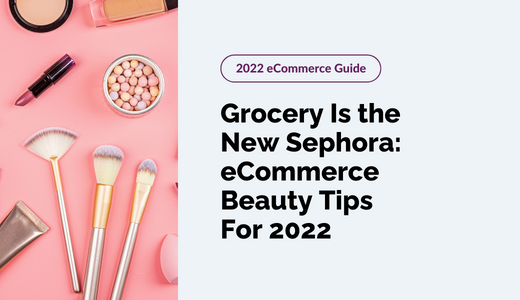
beauty
Grocery is the New Sephora
Picture this. You're in line at the grocery store. What's in your basket? Is it just food and beverage items? Chances are when you’re visiting retailers like Target, Walmart, Albertsons, and Whole Foods, beauty and personal care products are in your cart too.
Jan 2022
.png)
webinar
Unlocking Your Current and Future eCommerce Audiences with Deeper Shopper Intelligence
The profile of your brand’s average consumer is changing fast. Today, identity crafts who we are and how we make decisions, including what we choose to buy and how we do it. For brands to open up new ways to drive incrementality and win for years to come, they need to not only deeply understand who their shoppers are and how they shop today, but also who that shopper could be tomorrow.
Dec 2021
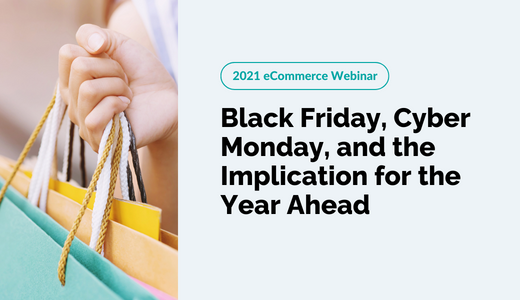
webinar
Black Friday, Cyber Monday, and the Implication for the Year Ahead
Join Suzy’s Founder & CEO Matt Britton, alongside MikMak’s Founder & CEO Rachel Tipograph, for a newsworthy conversation about shopping trends coming out of Black Friday and Cyber Monday.
Dec 2021

webinar
Unlock Your Current and Future eCommerce Audiences with Deeper Shopper Intelligence
For brands to open up new ways to drive incrementality and win for years to come, they need to not only deeply understand who their shoppers are and how they shop today, but also who that shopper could be tomorrow.
Dec 2021
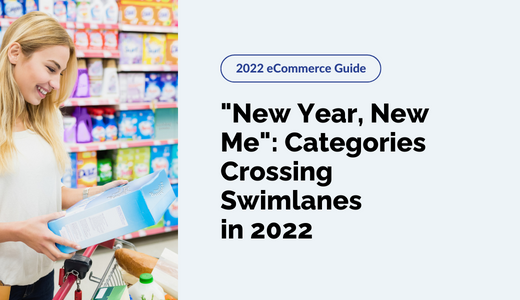
general
"New Year, New Me"
eCommerce acceleration has changed the way people shop. Brands that were previously limited to playing in specific categories, events, and markets have begun crossing over to new ones. As a result, finding out which trends have emerged and what new opportunities have opened up is key to growing and protecting your market share.
Dec 2021

alcohol
"Is January Really Dry?"
Is January really dry? Do men buy more alcohol than women? There are so many legacy industry trends that we take for granted. Many of these behaviors may have evolved since the acceleration of eCommerce for alcohol.
Dec 2021

webinar
State of the Consumer: Black Friday / Cyber Monday and the Implication for the Year Ahead
Join Suzy’s Founder & CEO Matt Britton, alongside MikMak’s Founder & CEO Rachel Tipograph, for a newsworthy conversation about shopping trends coming out of Black Friday and Cyber Monday. Tune in to learn about how consumers shopped this holiday season and what brands can incorporate into their planning for 2022
Nov 2021

general
A Very Omnichannel Holiday
This year’s holiday shopping will look different from years before, combining the higher consumer confidence of 2019, accelerated eCommerce adoption of 2020, and the omnichannel shopping behavior from 2021 retailer deal days.
Sep 2021

personal care
Personal Care Benchmarks & Insights
Did you know that this year, TikTok and YouTube are rising stars of personal care eCommerce? Read more to learn: consumer preferences for channels, retailers, and fulfillment, ft. MikMak's Shopping Index, personal care eCommerce benchmarks and projects for the holiday season, and actionable insights to capitalize on social commerce trends, shopping preference, and emerging demand pockets.
Aug 2021

beauty
Beauty Benchmarks & Insights
Did you know that this year, TikTok and YouTube are rising stars of beauty eCommerce? Read more to learn: consumer preferences for channels, retailers, and fulfillment, ft. MikMak's Shopping Index, personal care eCommerce benchmarks and projects for the holiday season, and actionable insights to capitalize on social commerce trends, shopping preference, and emerging demand pockets.
Aug 2021

food & bev
Grocery Benchmarks & Insights
Did you know that this year, TikTok and YouTube are rising stars of grocery eCommerce? Read more to learn: consumer preferences for channels, retailers, and fulfillment, ft. MikMak's Shopping Index, personal care eCommerce benchmarks and projects for the holiday season, and actionable insights to capitalize on social commerce trends, shopping preference, and emerging demand pockets.
Aug 2021

alcohol
| webinar
Alcohol Benchmarks & Insights
Did you know that this year, there's strong omnichannel fulfillment preference for alcohol eCommerce? Read more to learn: consumer preferences for channels, retailers, and fulfillment, ft. MikMak's Shopping Index, personal care eCommerce benchmarks and projects for the holiday season, and actionable insights to capitalize on social commerce trends, shopping preference, and emerging demand pockets.
Aug 2021
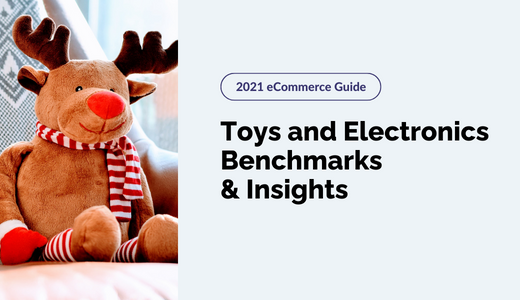
toys
| electronics
Toys and Electronics Benchmarks & Insights
Did you know that this year, shopper preference is more defined in toys and electronics eCommerce? Read more to learn: consumer preferences for channels, retailers, and fulfillment, ft. MikMak's Shopping Index, personal care eCommerce benchmarks and projects for the holiday season, and actionable insights to capitalize on social commerce trends, shopping preference, and emerging demand pockets.
Aug 2021

home care
Home Care Benchmarks & Insights
Did you know that this year, 30% of shoppers choose Amazon to check out for home care? Read more to learn: consumer preferences for channels, retailers, and fulfillment, ft. MikMak's Shopping Index, personal care eCommerce benchmarks and projects for the holiday season, and actionable insights to capitalize on social commerce trends, shopping preference, and emerging demand pockets.
Aug 2021
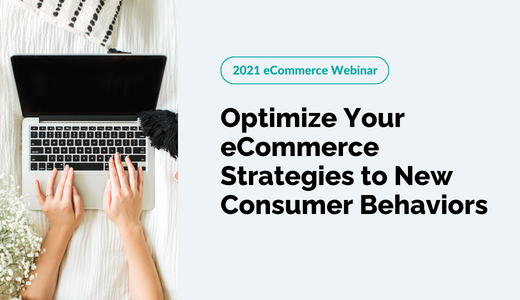
webinar
Optimize Your eCommerce Strategies to New Consumer Behaviors
Social distancing have moved your consumers to shop online. Since then, many brands have realized how unprepared their eCommerce strategies were to reach their consumers. Listen to Rachel Tipograph, CEO and founder of MikMak, discuss best practices to help you win in this eCommerce landscape.
Jun 2021

general
The Evolution of eCommerce and How to Accelerate Brand Growth
COVID-19 shifted shopping behaviors to be eCommerce first. The result? Today's eCommerce is where we expected it to be in 2030, leaving many brands scrambling to develop new strategies to grow and protect market share during this time of accelerated demand. This free resource will help you understand the changes and develop a strategy that’s relevant for your consumers.
Jun 2021
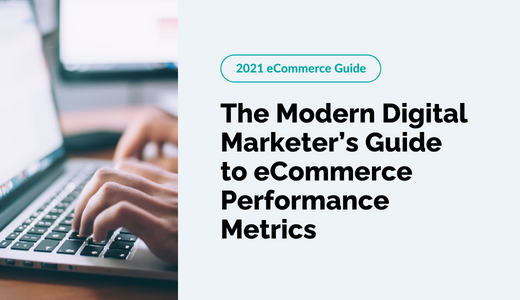
general
The Modern Digital Marketer’s Guide to eCommerce Performance Metrics
As your role as a brand marketer continues to be redefined, you need to take a new approach to your craft. One important place to start is to begin collecting and understanding different eCommerce metrics that can be used to make smarter decisions about future campaigns. Read this guide to learn what those metrics are, why they’re important, and how you can use them to find a better way forward.
Jun 2021
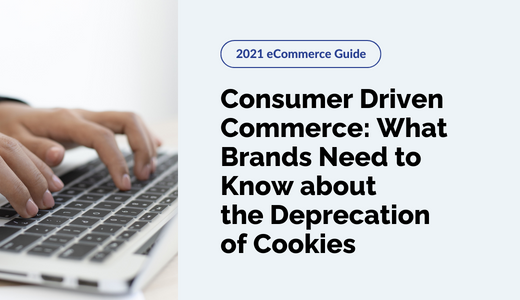
general
Consumer Driven Commerce
You’ve been hearing the buzz -- the “cookieless internet” is coming. Brands have long known the importance of understanding their consumers to provide the optimal shopping experience, and shopping data is how consumers supply brands with that information. Cookies are only one of the many ways that brands gather it. So if you’re a brand navigating this new world of consumer data to understand, engage, and serve your consumers, this is for you.
Mar 2021

general
Shopping from Home for the Holidays
This year, 71% of adult shoppers plan to do more than half of their holiday shopping online. However, social distancing has accelerated demand for eCommerce and shifted the way shoppers are inspired to purchase, and how they prefer do so. Download our 2020 Holiday Guide to learn more.
Dec 2020

